
I’ll Take Down My Flag, When You Take Down Yours!
by Gary Corseri
I’ve marched in the Civil Rights Movement. During the Vietnam War, I marched behind a Peace Symbol flag, and just happened to be in the flashbulb’s light when the Boston Globe reporter snapped his Cannon. My picture made it to the newspaper’s front page, which a war-supporting high-school administrator posted on the bulletin board in the faculty cafeteria with the caption: “Is this really the kind of character we want teaching our kids?” Some fellow anti-war faculty nodded surreptitious approval at me, but even more simply glowered. (I couldn’t understand why…. It wasn’t a terrible picture—even though I hadn’t smiled!) It was that kind of time….
For over half a century, I’ve written articles against racism and war. I was shocked and I grieved to see what happened at the Charleston Emanuel Church. Quickly, the call went out: We need to have a “conversation” about race in America! And, almost as quickly: Take down the Confederate flag! But, let’s be very clear: the Confederate flag is NOT a central issue here.

Sometime later, at that very white, upper-middle class Boston suburban high-school where my picture had nefariously been bulletin-boarded, my advanced English students were complaining about “all this symbolism stuff” that showed up in Shirley Jackson’s dramas, Dickens’ novels or Hemingway’s stories.
With Bogart cool, I didn’t say a word: I chalked the heart-symbol on the blackboard. Next to it, I drew a Christian crucifix; and then a five-pointed star; and then a Star of David. I juxtaposed the quarter moon and star of Islam, and then the Yin-Yang symbol of Taoism. And then the Buddhist swastika, and then the reversed Nazi swastika. I asked my students to identify these symbols and to explain why some were important to them and some were not.

It would be a much more pleasant world if we all understood symbols in the same way! (Even at their tender age, no one did.)
I told them about a teacher in another part of the state. She had also tried to teach a lesson about symbolism.
She had dared any kid in her high-school English class to take down the American flag in the classroom—and step on it.
Of course, there’s always at least one adolescent in any group who will take a dare! That teacher lost her job, and probably her career, for her bodacious demonstration of this entangled matter.
Symbolism is always important, but the Confederate flag is maligned if it is merely reduced to an historical oddity— a symbol of American racism; something to put behind us.
Let us be very careful here! Any attempt to drive that flag underground will only succeed in making it a more potent symbol of resistance. Resistance to the Federal Government, the consolidation of power, etc.
Coming from a mixed religious background, an olive-skinned “Caucasian” (yeah, my school records indicated that), being especially fond of Asian women, and with great respect for enlightened souls of all creeds and backgrounds, I don’t “rank” people according to their appearance— nor their family history.
 But, I do try very hard to know the real history, the oft-hidden history, of my own country and other countries— those countries still palpitating among us and those long-gone in the faintly-resounding well of Time.
But, I do try very hard to know the real history, the oft-hidden history, of my own country and other countries— those countries still palpitating among us and those long-gone in the faintly-resounding well of Time.
Books like Dee Brown’s “Bury My Heart at Wounded Knee,” which I read in my 20s, cast a cold, hard light on America’s wars against its Original Peoples. Authors like Richard Wright, W. E. B. Du Bois, Langston Hughes and James Baldwin helped me understand the racial struggle for dignity.
“The Dark Side of Thomas Jefferson” enlightened me about that top-notch “hero” with muddy boots.
The books in Howard Zinn’s “People’s History” series continue to inspire me to probe further.
Oliver Stone and Peter Kuznick’s 10-hour series, “The Untold History of the United States” should be watched again and again!
Our Civil War was not about “liberating slaves”–and most Southerners know that. Would there have been draft riots in New York if there were popular sentiment in the North for the liberation of Southern slaves?
Would some 50,000 “Yankees”—mostly recently-arrived Irish immigrants, have shown their defiance of Lincoln’s draft, lynched about 100 Blacks if there had been such a hunger to “liberate” slaves in the South? (If only they had $300—a huge sum then—they could have bought their way out of the draft, as richer, more established Americans had done—in the Revolutionary War and in the “Civil War.” (Let’s recall that it is called “The War of Northern Aggression” in the South. Southerners felt they had a Constitutional right to secede! Frankly, I agree. And, if there had been no “Civil War,” the “peculiar institution” of slavery would have outlived its usefulness much sooner than the apartheid-segregation that replaced it!)
The slave-trade had been very profitable to the North and South for several decades. When the North began to industrialize, its need for cheap labor became paramount. Might such “cheap labor” be found in the South—among “liberated” slaves?
Also, there was that huge territory recently conquered from the new Republic of Mexico! What to do with it (mostly occupied by “redskins” or “savages” as Jefferson had designated them in The Declaration of “Independence”—and as Lincoln must have agreed when, as a young man, he fought them in the “Blackhawk War,” and, later, during his Presidency, had 39 of them hanged, when they tried to escape their prison-reservation.)
Who would control that territory? Northern industrialists? Northern railroad men (and railroad lawyers like Lincoln)? Northern banks?
Frankly, I have no love of the Confederate flag; but, just as frankly, I have no love of the American flag…. (Yet, from the age of 5, I was compelled to stand and “pledge allegiance” to that flag. I had no idea, of course, what “pledging” or “allegiance” meant then!)

On the 4th of July, when Americans raise their flags as a proud symbol of their “freedom,” will anyone dare to lower their flags to half-mast to commemorate the 60,000 Americans who died in a now-acknowledged “unnecessary” war in Vietnam– let alone the millions of Asians?
Would it be disrespectful even to suggest such a gesture?
I think our “issues,” now boiling over in many ways, are even more deep-rooted in the human psyche than white-black distrust and antagonism: xenophobia; fear of the Other; fear of oneself and the Unknown.
These various fears have divided us since our colonial times–when we hanged “witches” in Salem; or invited Pequot “Indians” to be our “guests” at a harvest festival, then locked them in a building and burned hundreds of them alive!
Was it the huge, dangerous “frontier” that generated such fearfulness? Was it the oceanic separation from the “Mother Country”? Was it the ever increasing disparities between indentured servants, the working classes, the super-elite?
We need to do a lot more searching, a lot deeper digging, if we’re going to root out and destroy the virus that has been killing us for centuries!
Soon after I had joined the faculty at that suburban Boston high school, “bussing” programs were introduced— notwithstanding the strident opposition of anti-bussing groups.
My extra-curricular contribution was an interracial “Black and White Club” where students could meet and share their experiences, get to know each other. We read “Soul on Ice” by Eldridge Cleaver, and poems by Hughes, Countee Cullen, James Weldon Johnson and Claude McKay.
Express, recognize, define, explain, re-define, refine, listen and learn…, and we can respect other people’s symbols for what they are: waystations on a long and winding road to a transcendent, global awareness.
Gary Corseri can be contacted at: [email protected].
Gary Corseri has posted and published articles, fiction, poetry and dramas at Common Dreams, CounterPunch, Dissident Voice, The New York Times, Village Voice and hundreds of other venues internationally. His dramas have appeared on Atlanta-PBS and elsewhere.He has performed his work at the Carter Presidential Library.
His books include the novels, A Fine Excess: An Australian Odyssey and Holy Grail, Holy Grail: Quest East, Quest West
All content herein is owned by author exclusively. Expressed opinions are NOT necessarily the views of VNR, authors, affiliates, advertisers, sponsors, partners, technicians, or VT Network. Some content may be satirical in nature.
All images within are full responsibility of the author and NOT VNR.
Read Full Policy Notice - Comment Policy






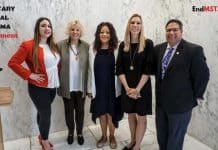

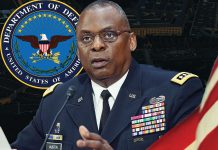
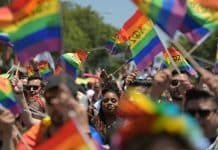

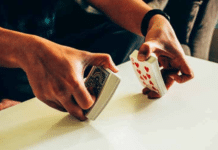
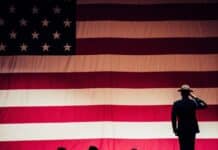
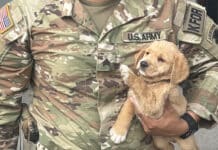




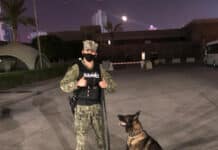
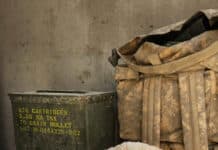
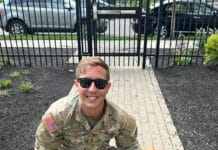








De Tocqueville once described America as a state of mind. I agree. That is the America I and the much of the world grew up believing in; an idyllic land, built upon ideals of freedom, equality of man, liberty and justice for all, those high and illustrious ideals of The Republic, reflecting the highest hopes and dreams of the glory of man.
But, as I grew older I found that these were the Emperor’s false robes; that they covered a reality which fell short, far, far short of the ideal, if not exactly the antithesis of those ideals.
I am even more grievously outraged that America may have presented itself to the world as a defender and protector of man, when the richness of its false garments hid the jailor slaver. I now deplore and dislike what I see it has become, or has exposed itself for the “Raincoat Charlie” it has always been.
The ugly nudity we see in America’s corpse today, is not the work of George Bush, the Republicans, nor the arrogant Americans, but is the product of its history. Neither is a root cause, they are but the effects of a long history. They are consequences.
As a corpse, the obvious becomes apparent; this thing is not growing or developing; it is corrupting, and the stench is becoming unbearable.
And, the fight we pursue, is it futile? Are we trying to beat life into a dead horse which never actually lived? Trying to beat a dream into reality? By doing so, are we perhaps forging what was a lovely and idyllic dream into a nightmare?
How did it happen? How did the leaders of the “free world” become complicit in ethnic cleansing, murder and mayhem?
I have no answers. Robert Parry, investigative reporter and author distinctly elucidates in a nutshell: “The United States, for generations, has sustained two parallel but opposed states of mind about military atrocities and human rights: one of US benevolence, generally held by the public, and the other of ends-justify-the-means brutality sponsored by counterinsurgency specialists. Normally, the specialists carry out their actions in remote locations with little notice in the national press. That allows the public to sustain its faith in a just America, while hard-nosed security and economic interests are still protected in secret. ”
Lt. Cmdr. Charles Swift a Navy lawyer, not too long ago responded to a question by describing America in the same terms; an America undefined by racial, religious, ethnic or cultural circumstance, by geographic boundary, or cultural identity when he said; “America is a mix of every people in the world. …Our territory is not homogenous. What we are fixed by are our ideals. That’s basically what America is. We are a set of principles. If we lose sight of those principles, then we lose sight of America.”
Might the ideal still be within the realm of achievability? I have my doubts. But, that is the way with ideals. And without them, we have nothing upon which to build hope.
@ Johnny Punish above.
A pessimist drinks his cognac and says, “It smells of bedbugs,” while an optimist catches a bedbug, crushes it, then sniffs it and says, “A slight whiff of cognac.”
“I would rather be the pessimist who drinks cognac than the optimist who sniffs bedbugs. (Laughter) ” Vlad Putin at:
World Order: New Rules or a Game without Rules (FULL VIDEO)
http://mycatbirdseat.com/2015/06/world-order-new-rules-or-a-game-without-rules-full-video/
Emanuel Church Confronts Racial Violence:
http://www.veteransnewsreport.com/2015/06/29/519448-emanuel-church-confronts-racial-violence/
Debbie
Yes! Lower the Flag on the 4th of July
Pulitzer Prize winner Harold Pinter, dramatist and poet, offered this image of war, gruesome enough to worry a politician:
THE BOMBS
There are no more words to be said
All we have left are the bombs
Which burst out of our head
All that is left are the bombs
Which suck out the last of our blood
All we have left are the bombs
Which polish the skulls of the dead
Allen Ginsberg, also a Vietnam War poet had this to say:
“The only thing that can save the world is the reclaiming of the awareness of the world. That’s what poetry does,” howled Ginsberg.
Several hundred young men heard Ginsberg say what follows and left the US for Canada:
What if somebody gave a war and
Nobody came?
Life would ring the bells of Ecstasy and
Forever be itself again.
Comments are closed.